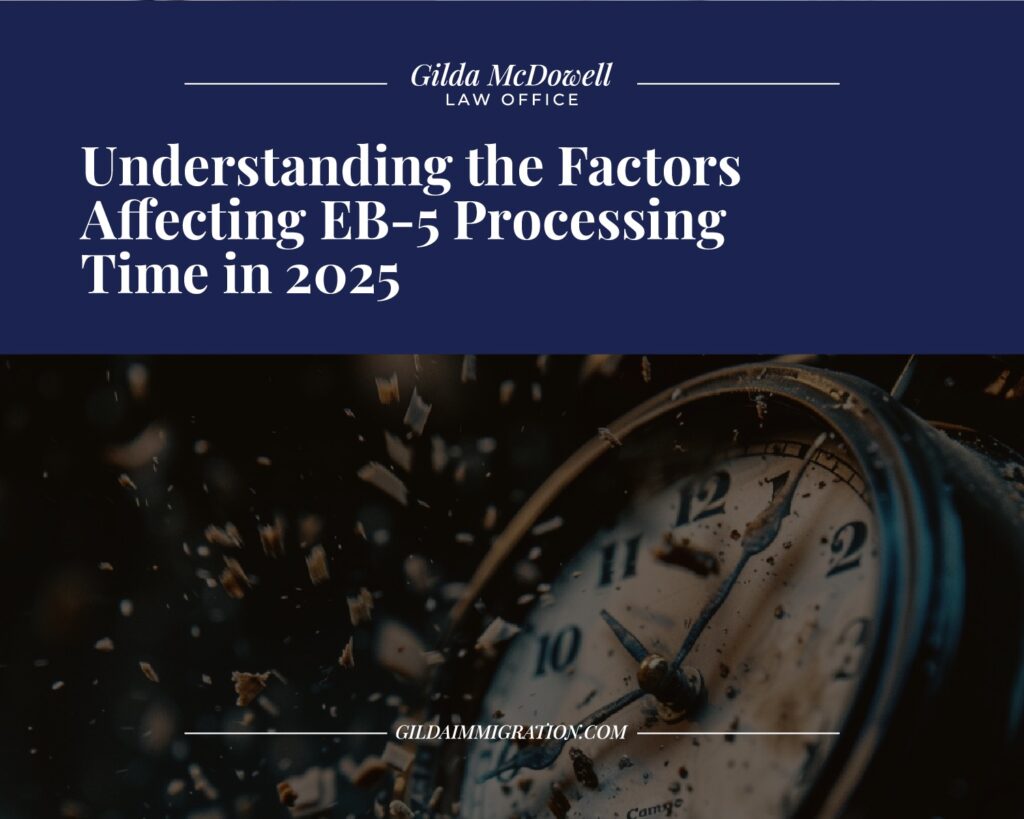Investing for a Green Card? The EB-5 Program Might Be Your Path — or Your Pitfall.
You’re ready to invest in your future — not just financially, but geographically. The EB-5 investor visa program offers one of the most direct routes to U.S. permanent residency. In exchange for investing capital in a job-creating U.S. project, you and your family could receive green cards and a path to American citizenship.
But here’s the catch:
In 2025, the EB-5 program is more complex and uncertain than ever.
From regional center delays to changing visa backlogs, investors are rightly asking:
“Is the EB-5 green card still worth it?”
This guide breaks down what’s happening in 2025, how it affects processing times, and what smart investors need to know before making a six- or seven-figure commitment.
Understanding the EB-5 Green Card Program (And Why It’s Popular)
The EB-5 Immigrant Investor Program allows foreign nationals to obtain a green card by investing:
- $800,000 in a targeted employment area (TEA), or
- $1,050,000 in a standard investment project
The investment must:
- Create at least 10 full-time U.S. jobs
- Be at risk (i.e., not guaranteed return)
- Remain in the project until conditions are met (usually for 2–5 years)
In return, successful investors and their immediate family members (spouse and children under 21) can receive permanent resident status in the U.S.
But while the EB-5 path can offer life-changing benefits, it’s also fraught with risks and delays — especially in 2025.
Why the EB-5 Green Card Is Slowing Down in 2025
1. Regional Center Reauthorization and Delays
Most EB-5 investors apply through regional centers, which pool investment funds for pre-approved projects. These centers are supposed to streamline the process — but in recent years, they’ve become a major source of delay.
In 2025, many regional centers are still waiting for USCIS reauthorization and project approvals. If the regional center your investment is tied to becomes inactive or loses certification, your entire application could be put on hold.
Tip: Choose your regional center carefully. Look for a center with:
- Recent approvals under the new EB-5 Reform and Integrity Act
- Transparent job creation metrics
- A proven track record of successful I-526 and I-829 approvals
2. Visa Backlogs Based on Country of Birth
Like most U.S. green card categories, EB-5 is subject to per-country caps. Applicants from countries with high demand (such as China, India, and Vietnam) often face years-long wait times due to retrogressed priority dates.
To check whether your country faces a backlog, consult the U.S. Visa Bulletin.
Even if your investment is approved, your green card could be delayed for years if your priority date isn’t current.
3. Shifting Immigration Policies and Processing Requirements
The U.S. immigration system is heavily influenced by:
- Political shifts
- Administrative changes in USCIS
- New interpretations of eligibility criteria
In 2025, the EB-5 landscape continues to evolve:
- Increased scrutiny on source of funds documentation
- New vetting processes for regional centers and projects
- Longer adjudication times for I-526 and I-829 petitions
Even well-prepared investors are seeing wait times of 24–36 months or more, depending on project complexity and country of origin.
So… Is the EB-5 Green Card Really Worth It?
Let’s break it down.
✅ When It Is Worth It:
- You need a long-term U.S. residency solution
- You want green cards for your spouse and children
- You have risk-tolerant capital and can wait several years
- You’ve found a vetted, compliant regional center with a solid job-creation model
🚫 When It May Not Be Worth It:
- You’re under time pressure due to visa expirations
- You’re expecting guaranteed returns or short timelines
- You’re applying from a backlogged country and don’t want a multi-year delay
- You haven’t worked with an immigration attorney to verify the regional center’s compliance
Frequently Asked Questions About the EB-5 Green Card in 2025
How long does the EB-5 green card process take in 2025?
Most I-526 petitions take 24–36 months, and visa issuance may take longer for countries facing backlogs. I-829 petitions for permanent green cards may take 18+ months.
Will my investment be returned if my application is denied?
It depends on the terms of the regional center. Many investments are “at-risk,” meaning there’s no guaranteed return, especially if USCIS denies your case.
Can I apply for an EB-5 from within the U.S.?
Yes — if you’re already in the U.S. on a valid visa, you may file for Adjustment of Status (Form I-485) when your priority date becomes current.
Is the EB-5 faster than other green card options?
Not always. EB-1 or EB-2 National Interest Waiver (NIW) options may be faster and more cost-effective depending on your background and career.
Can I include my family in the EB-5 petition?
Yes — your spouse and children under 21 are eligible for green cards through your application.
Don’t Make a Million-Dollar Mistake. Get Advice Before You Invest.
The EB-5 green card may open the door to U.S. residency, but it’s not the right fit for everyone. In 2025, investors face more uncertainty than ever, and without the right strategy, you could lose both time and money.
Let’s help you protect both.

